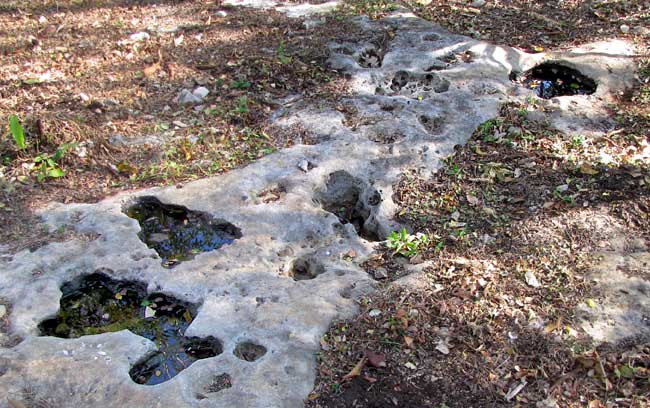Excerpts from Jim Conrad's
Naturalist Newsletter

from the March 14, 2010 Newsletter issued from Hacienda Chichen Resort beside Chichén Itzá Ruins, central Yucatán, MÉXICO; limestone bedrock, elevation ~39m (~128ft), ~N20.676°, ~W88.569°
THE HALTÚN
When I first arrived here Don Philomeno, in his 70s and Hacienda Chichen's longest-serving employee, showed me around the grounds. We came into an area where soil was completely missing, exposing nothing but an expanse of white limestone bedrock. The Don knelt beside a water-filled depression in the rock, about the size of a yellow dog, and proudly told me how he vividly remembered the day when it was he who discovered this very depression.
In Maya such water-holding holes in limestone bedrock have their own name. Such a hole is a haltún. You can see some at the top of this page.
In Maya culture, the haltún is important for the simple reason that when you're wandering in the forest and find one, you can drink its water. At least older Maya are still acutely aware that humans need unpolluted water, and that if drinkable water disappears, living becomes impossible. For older Maya like Don Philomeno, the haltún demands great respect. Don Philomeno spent several minutes explaining to me the proper way to clean one and protect it, and I felt honored to be initiated in such a way into the mystical realm of the haltún.
I'm thinking about haltúns nowadays because most days I pull up a few buckets of water from the 80-ft-deep well where the Brittle Maidenhairs live, keep each haltún in the area filled, and water various saplings we want to bring through the current dry season.
Also I'm thinking about the haltún because if you want to see birds you can't do better than to position yourself nearby, and just watch the stream of species come in from the forest and settle there for a drink.
The haltún is a wonderful thing.